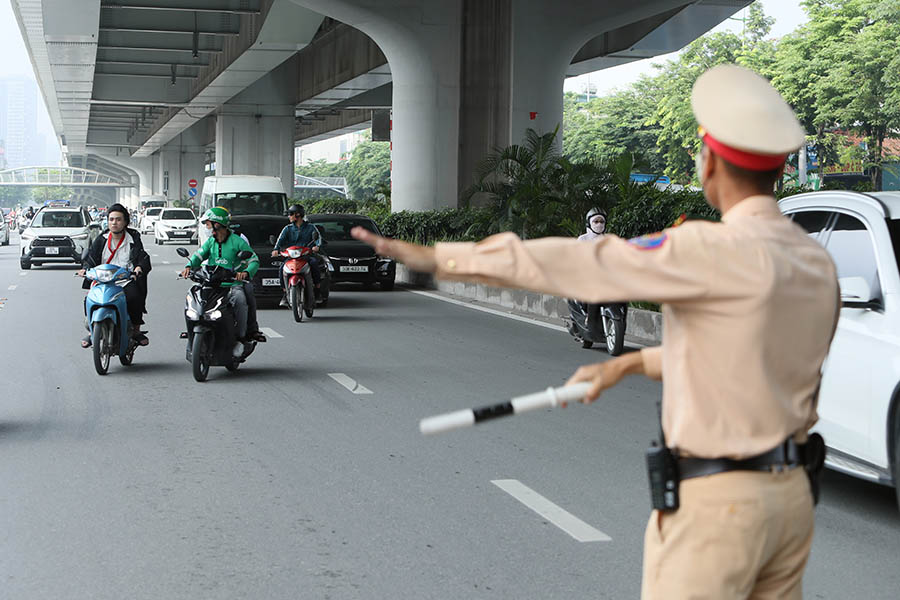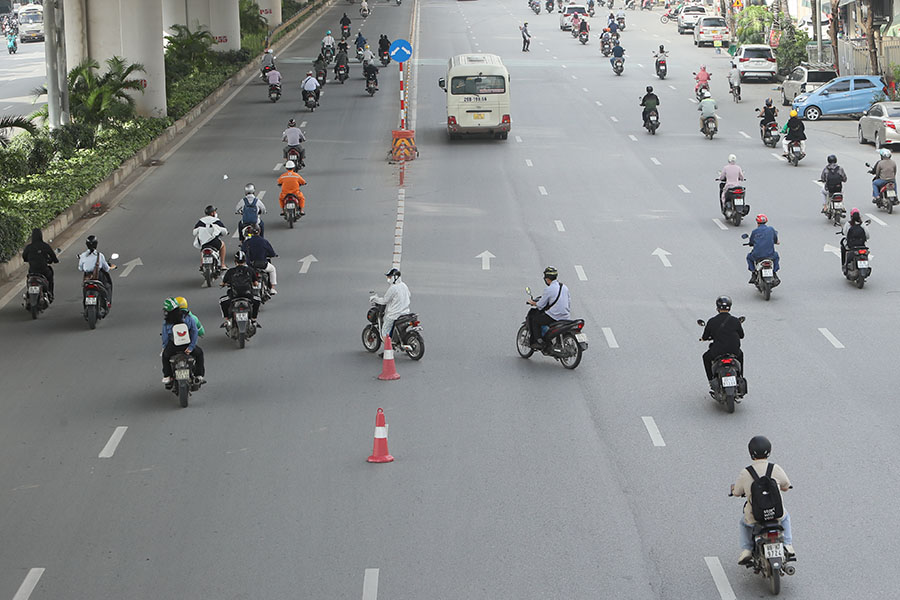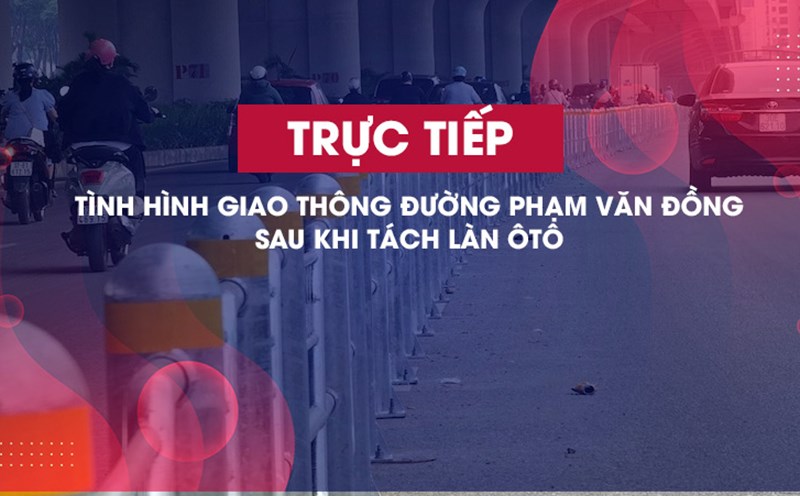From July 4, 2025, the Hanoi Department of Construction will start dividing lanes on Pham Van Dong Street (Hanoi). Accordingly, there are two lanes close to the median strip in each direction of the road for cars. The remaining lanes next to the sidewalk are for mixed vehicles.
These two groups of lanes are separated by hard median strips, vehicles are only allowed to move lanes at intersections and turning points.
According to the reporter of Lao Dong newspaper in recent days, Pham Van Dong road axis has generally not experienced prolonged congestion, only appearing local congestion during rush hour, especially at the Pham Van Dong intersection - the internal road of Giao Thong city.
However, it is worth noting that the situation of motorbikes entering lanes reserved for cars is still very common.
On July 6, just trying to place the camera for about 1 minute at the beginning of the median strip (opposite house number 272 Pham Van Dong), PV recorded 27 vehicles entering the lane reserved for cars, of which 25 were motorbikes.
"People go in to turn around to the other side of the road several hundred meters away, if they don't go in, they have to go down to Hoang Quoc Viet intersection in more than 1km to turn around," said Mr. Nguyen Van Phu (Nghia Do ward, Hanoi).
Some residents said that previously, going from Hoa Binh Park to the Hoang Quoc Viet - Pham Van Dong intersection, there were 3 points of around.
However, there is currently only 1 turning point at the P46 - P45 position of the elevated Ring Road 3 (about 1.4km from Hoa Binh Park) and 1 point at Hoang Quoc Viet intersection (about 2.8km from Hoa Binh Park).
In reality, most motorbike drivers enter the car lane with the purpose of turning around to a nearer road, instead of having to travel a long distance to the turning points according to regulations.
However, motorbikes entering a lane reserved for cars, especially when the lane has been divided by a hard median strip, poses a high risk of traffic accidents, especially when vehicles suddenly change lanes.
"During the pilot process, people need to strictly comply with regulations, lane division plans, signs and commands of traffic controllers.
During this time, we will also record the situation and propose adjustments if there are problems affecting people's travel," said a traffic police officer on duty in the lane division.


According to the leader of the Hanoi Traffic Infrastructure Maintenance Board, in the coming time, the unit will continue to monitor and evaluate to make the most appropriate adjustments, creating favorable conditions for people to travel.










